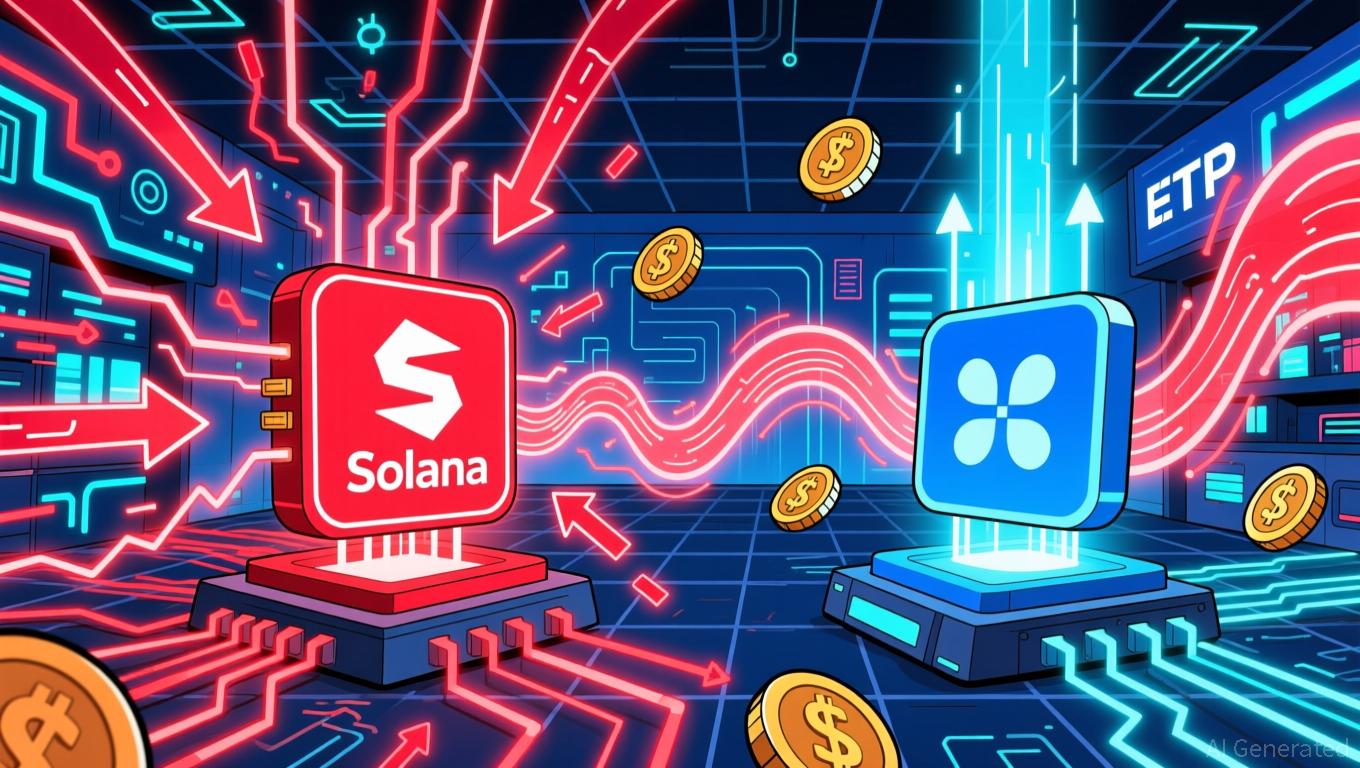Turkmenistan Approves Cryptocurrency Under Government Oversight, Navigating the Tension Between Oversight and Decentralized Principles
- Turkmenistan legalizes crypto trading under strict state control from 2026, requiring licenses, KYC/AML checks, and cold storage for exchanges. - The central bank classifies tokens as "backed" or "unbacked," regulates liquidity, and enforces miner registration with approved storage. - State control allows voiding token issuances, aligning with global trends but raising questions about balancing regulation and decentralization. - Analysts debate if strict oversight enhances security or stifles innovation
Turkmenistan Embraces Cryptocurrency with New Regulatory Law
Starting January 1, 2026, Turkmenistan will officially permit cryptocurrency trading, introducing a comprehensive regulatory system. President Serdar Berdimuhamedov has enacted legislation that marks a major departure from the nation’s traditionally insular and tightly regulated economic policies. The new framework requires crypto exchanges and custodial platforms to obtain licenses, implement Know-Your-Client (KYC) and Anti-Money Laundering (AML) protocols, and utilize secure cold storage solutions.
Despite these advancements, conventional banks are barred from participating in crypto-related activities. The central bank maintains significant oversight, with the authority to approve distributed ledger technologies or even manage its own blockchain network, effectively channeling crypto operations through state-run systems.

Key Provisions of the New Law
- Cryptocurrencies are not accepted as official currency, but are classified as either “backed” or “unbacked” assets.
- Regulators will set liquidity and redemption standards for backed tokens, while unbacked cryptocurrencies may be subject to additional restrictions to safeguard the financial system.
- All mining operations and mining pools must register with the central bank, and unauthorized mining is strictly prohibited.
- Miners are obligated to store their digital assets in approved cold wallets, with penalties for violations.
- The government reserves the right to cancel token issuances or require refunds, underscoring its centralized approach to oversight.
This legislative move is designed to update Turkmenistan’s economic landscape, encourage legitimate crypto investment, and reduce reliance on natural gas revenues. By clarifying legal standards, officials aim to increase transparency and curb illegal activities, aligning the country with international trends in digital asset governance. The law follows a government session in November that laid the groundwork for digital asset regulation and proposed the creation of a State Commission to supervise the sector.
Global Context and Implications
Turkmenistan’s initiative mirrors a global trend toward digital asset regulation. Other nations, such as the United Kingdom and South Korea, have also introduced policies to integrate cryptocurrencies into mainstream finance, including tax incentives for DeFi users and expanded AML rules. However, Turkmenistan’s distinctly centralized model raises questions about the trade-off between regulatory control and the decentralized ethos of crypto. Experts note that while stringent rules may limit innovation in decentralized finance, they could also strengthen security and consumer safeguards.
The rollout of this law will challenge Turkmenistan to balance its authoritative governance with the open, borderless nature of cryptocurrencies. As the country seeks to become a regulated center for digital assets, its experience may shape both regional adoption and broader international regulatory approaches.
Disclaimer: The content of this article solely reflects the author's opinion and does not represent the platform in any capacity. This article is not intended to serve as a reference for making investment decisions.
You may also like
Ethereum News Update: Amundi’s Integrated Approach Connects Blockchain with Conventional Financial Regulations
- Amundi, Europe's largest asset manager, launched its first Ethereum-based tokenized money-market fund, enabling 24/7 settlements and transparent record-keeping via blockchain. - The hybrid model, developed with CACEIS, combines traditional fund operations with blockchain-based ownership, preserving regulatory compliance while expanding investor access. - Ethereum's dominance in stablecoin and RWA transfers ($105.94B in 30 days) underscores its role in accelerating tokenization, with Amundi positioning it

XRP News Today: XRP ETFs Drive Price Increases, While Solana ETFs Ease Selling Pressure
- XRP ETFs raised $587M in inflows since late November, outpacing Solana's $568M as investors favor altcoins with regulatory clarity and utility. - Bitwise XRP ETF's $107M debut and zero-fee strategy drove momentum, while Solana ETFs faced $156M weekly outflows due to network reliability concerns. - XRP's inflows acted as a "battering ram" pushing prices above $2.27, contrasting Solana's ETFs which merely dampened sell pressure without reversing its decline. - Analysts predict XRP could reach $3 by Decembe

The Federal Reserve's Change in Policy and Its Impact on Alternative Cryptocurrencies Such as Solana
- Fed's 2025 policy shifts, including rate cuts and stablecoin regulations, are reshaping altcoin markets by altering liquidity and risk appetite. - Solana's Alpenglow upgrade (150ms finality, 1M TPS) addresses scalability issues, aligning with Fed's AI-driven infrastructure focus despite network reliability concerns. - Institutional inflows into Solana ETFs ($100M AUM) contrast with retail caution (78% HODLers in red), highlighting divergent risk perceptions amid 30% price corrections. - Divergent ETF flo

Avail's Intent-Driven Nexus Addresses the Issue of Fragmented Liquidity Across Chains
- Avail launches Nexus Mainnet, a cross-chain solution unifying liquidity across Ethereum , Solana , and EVM networks. - The intent-solver model enables seamless asset transfers without technical complexities, streamlining user experiences. - Developers gain modular tools for multichain integration, reducing costs as cross-chain liquidity demand grows. - Nexus abstracts execution layers, offering unified balances and execution while addressing fragmentation challenges. - With $50B+ in cross-chain activity
